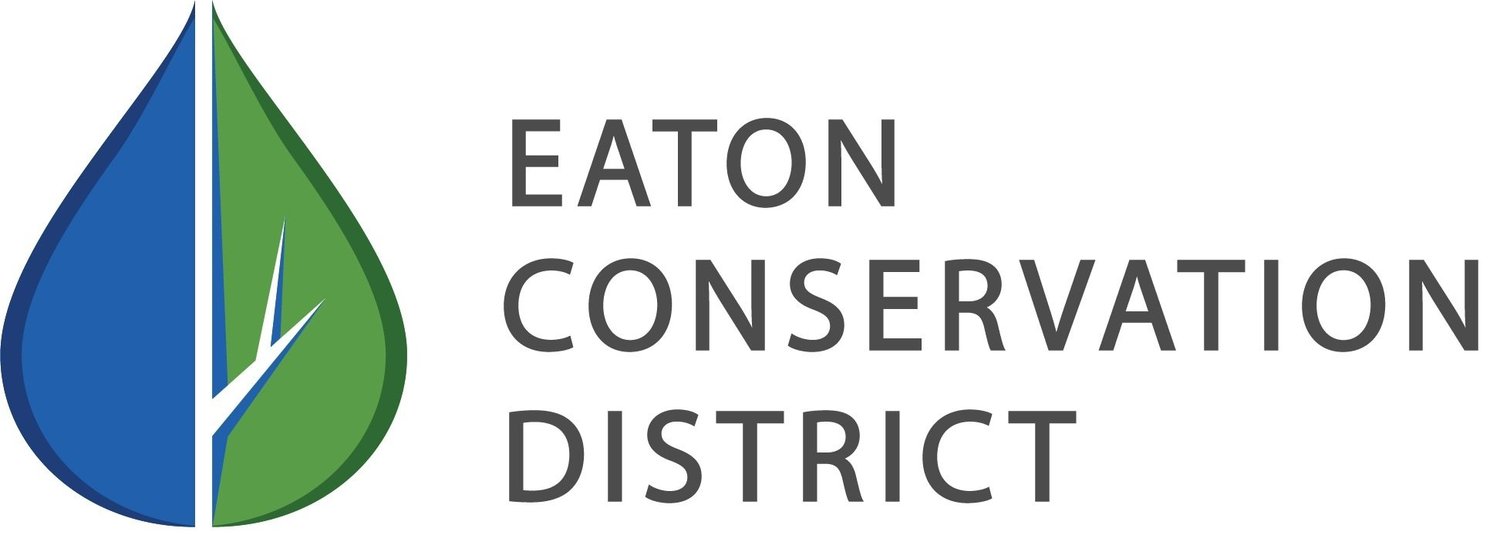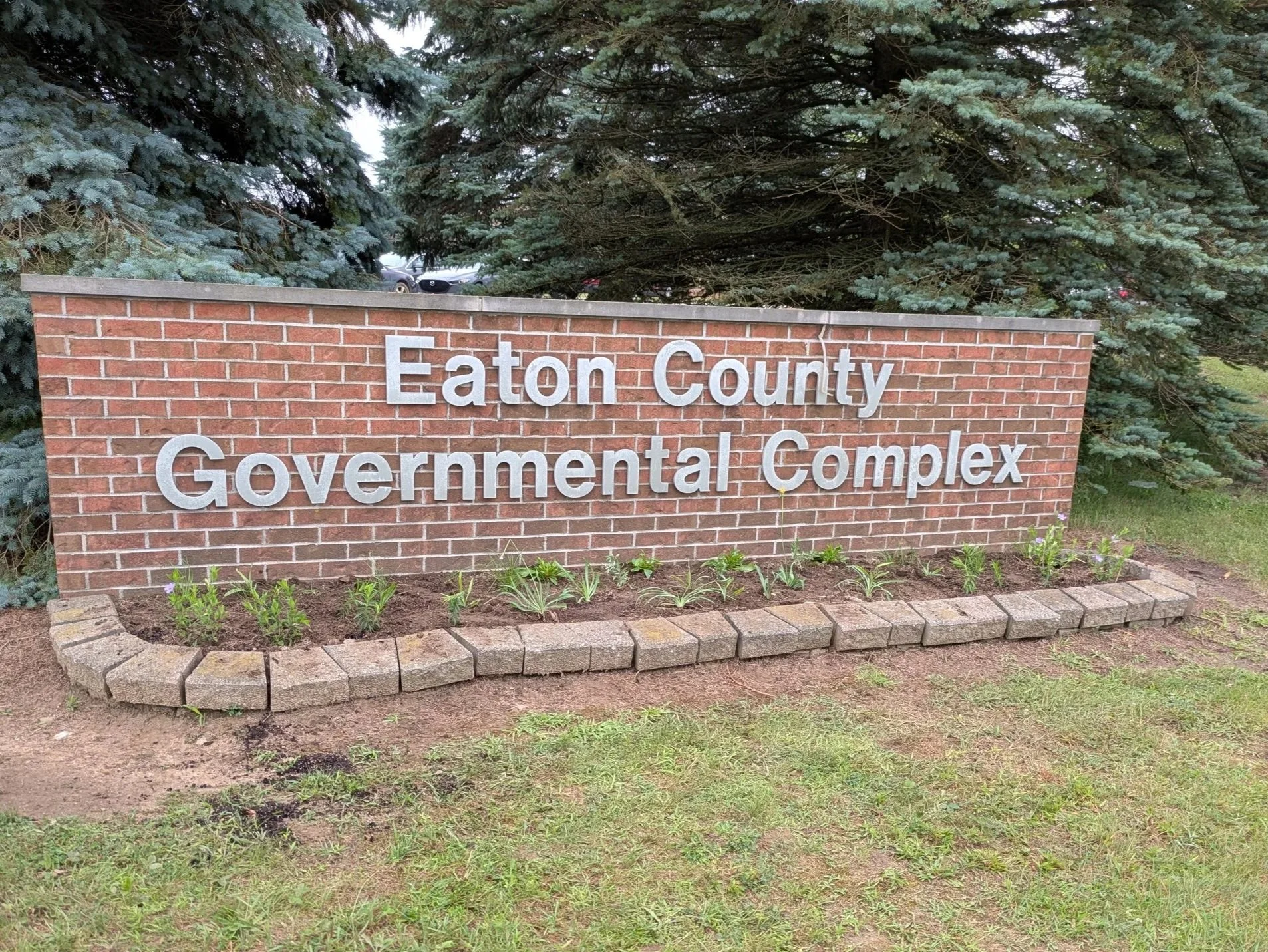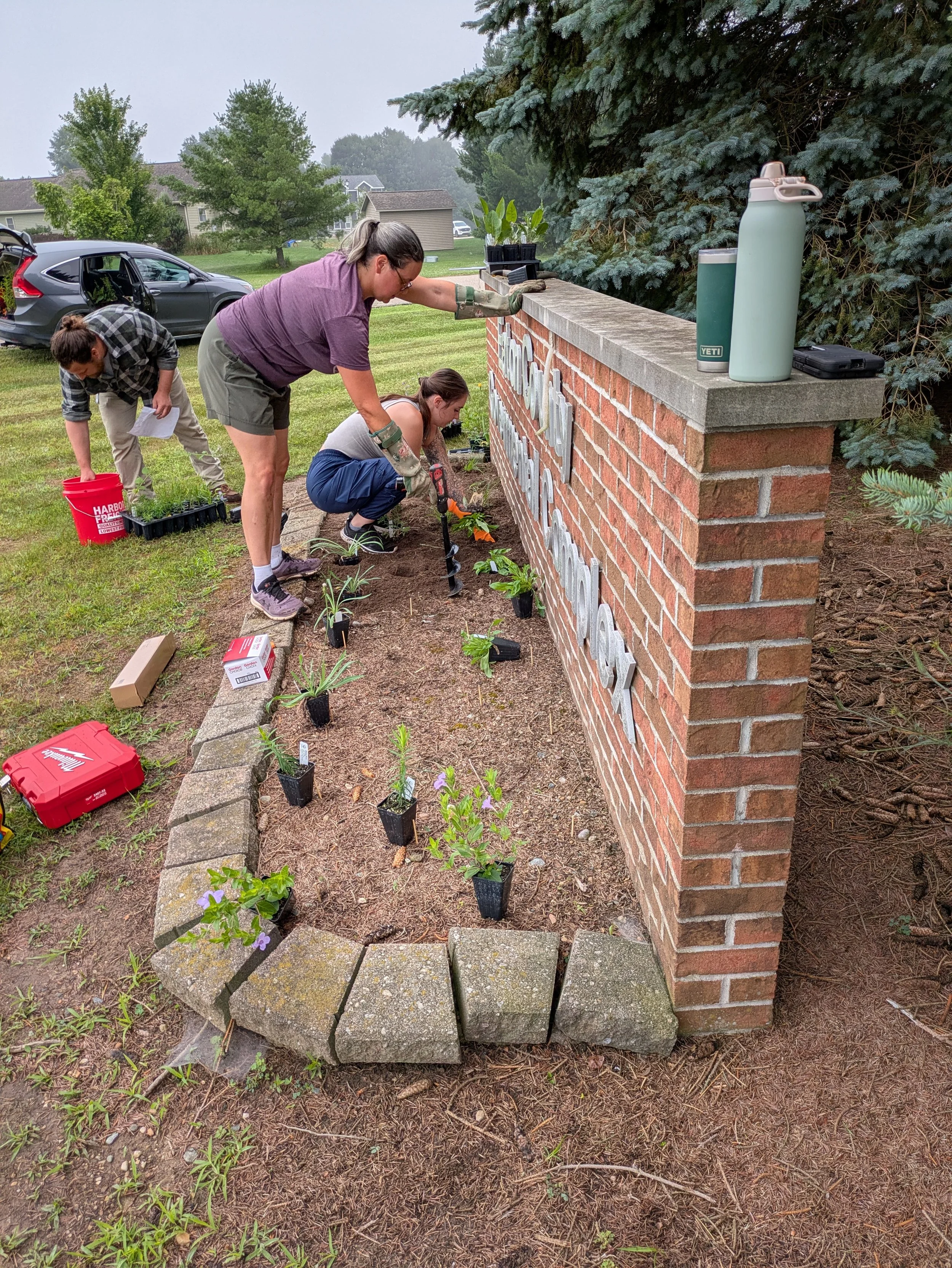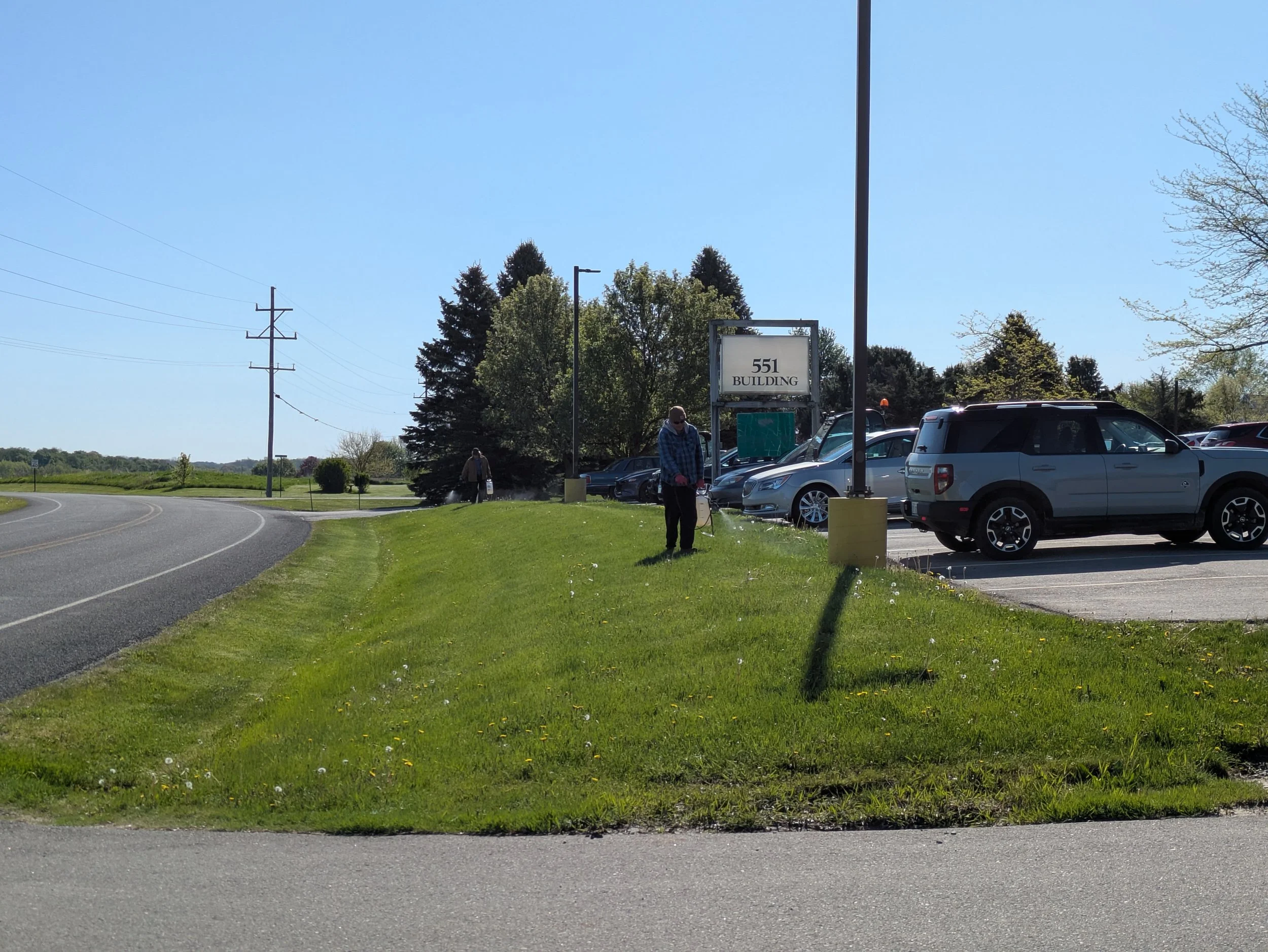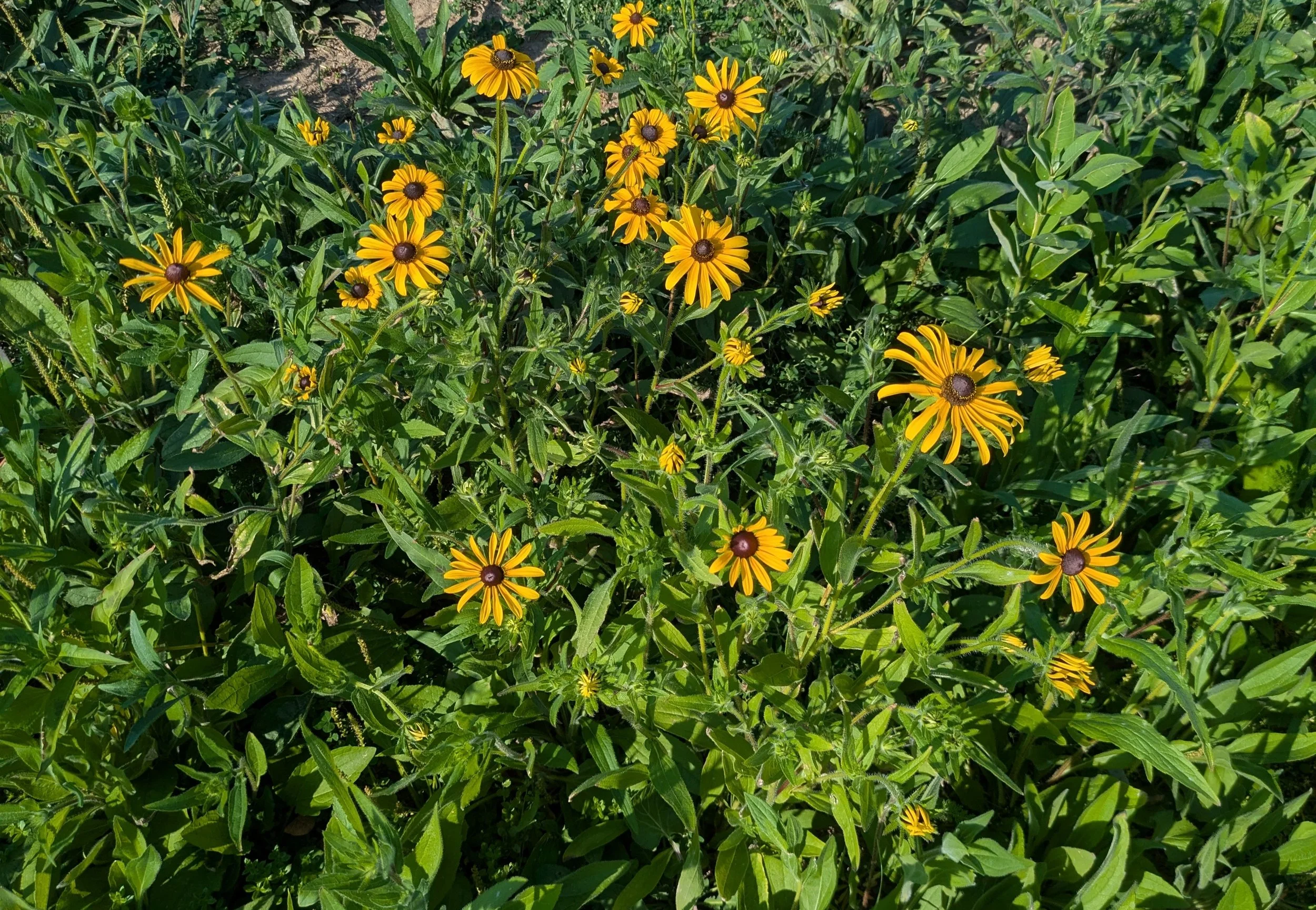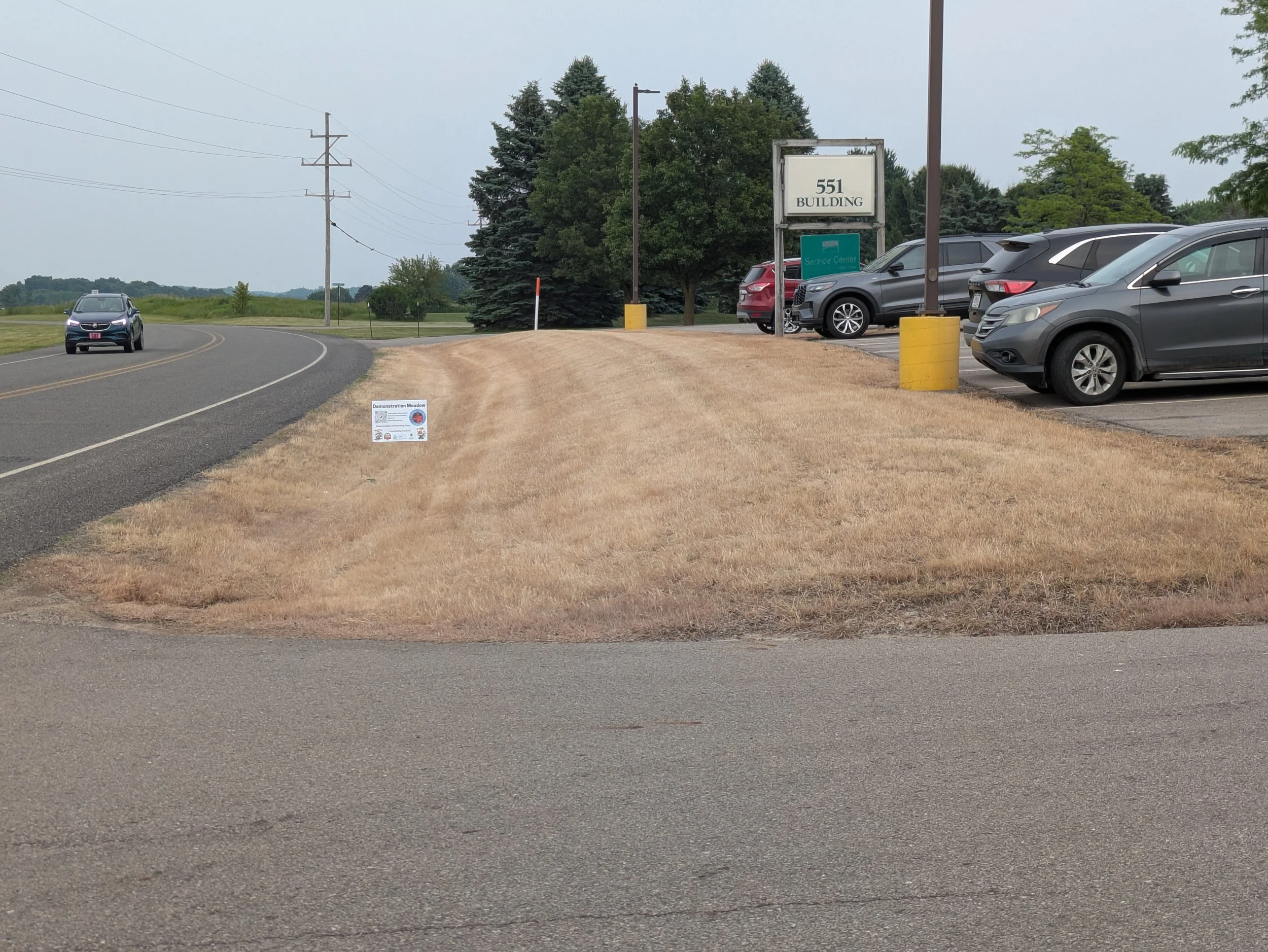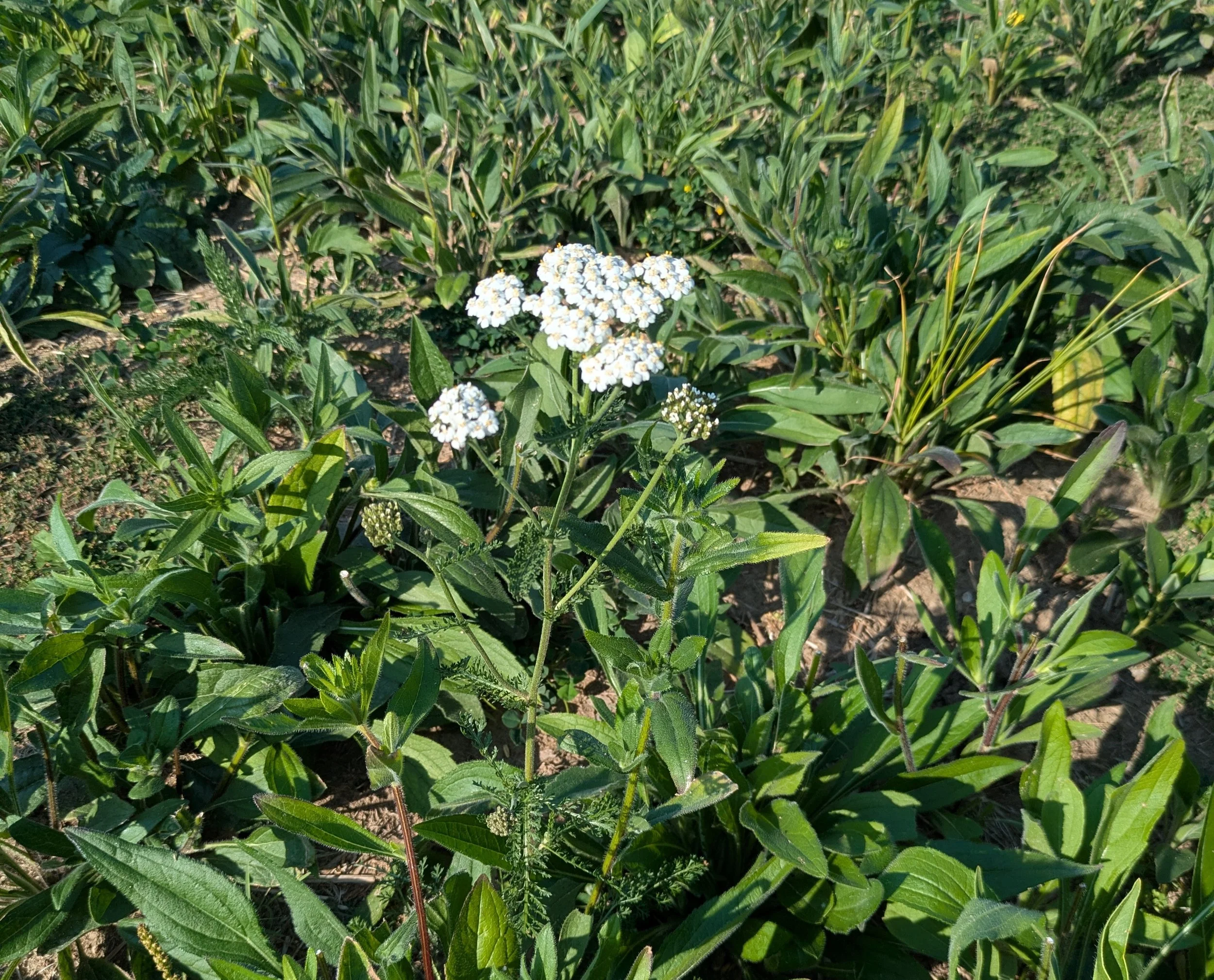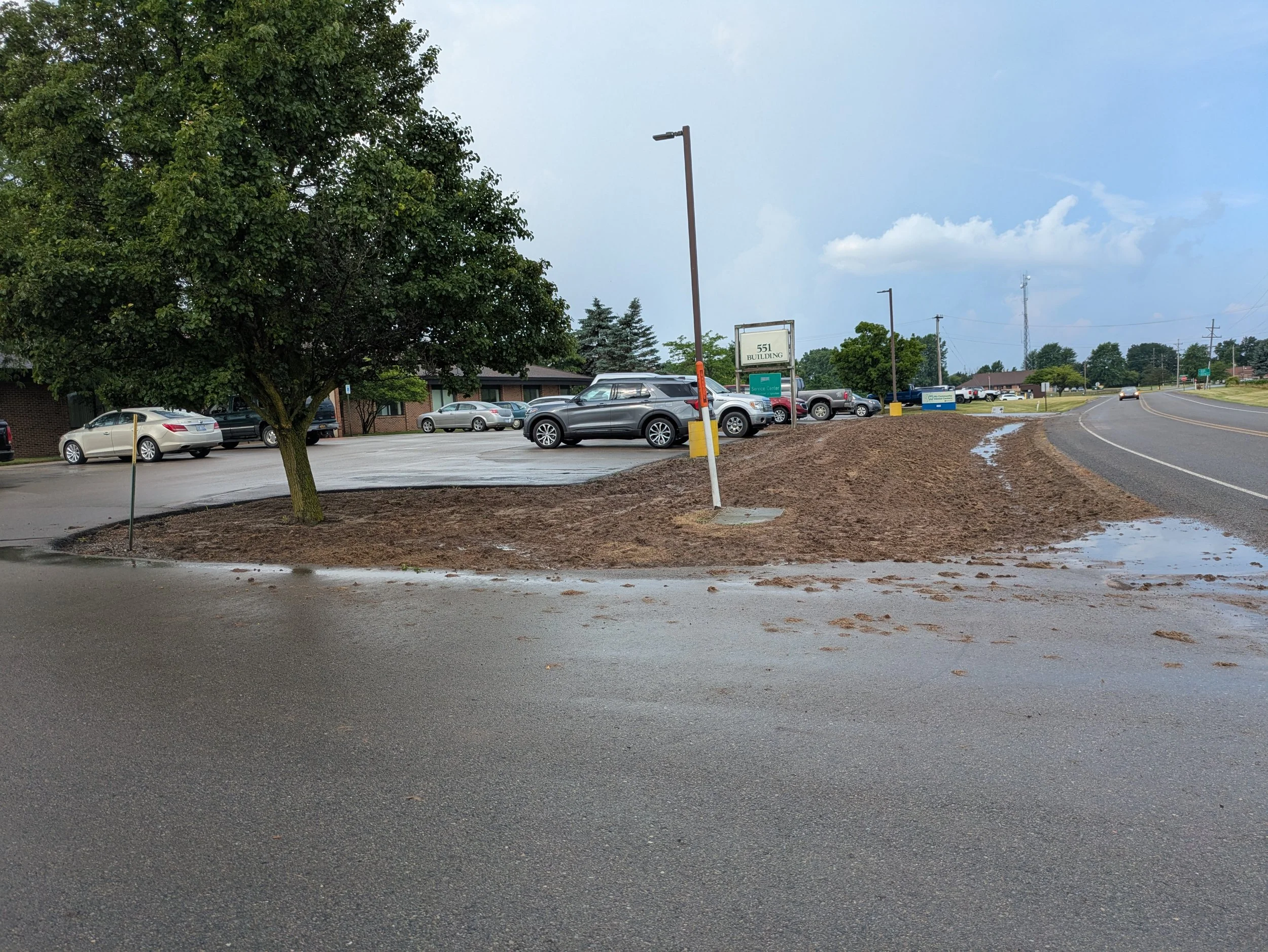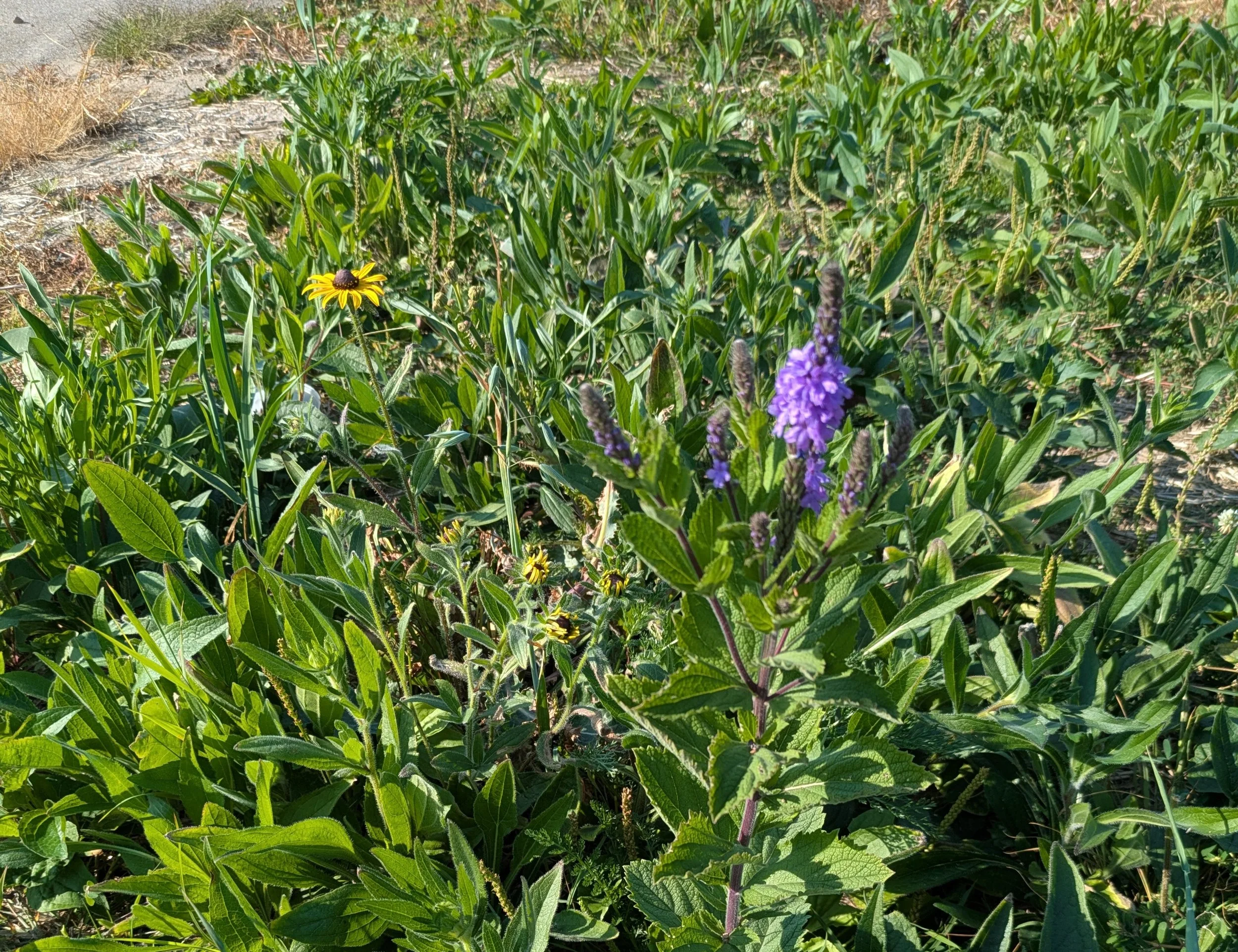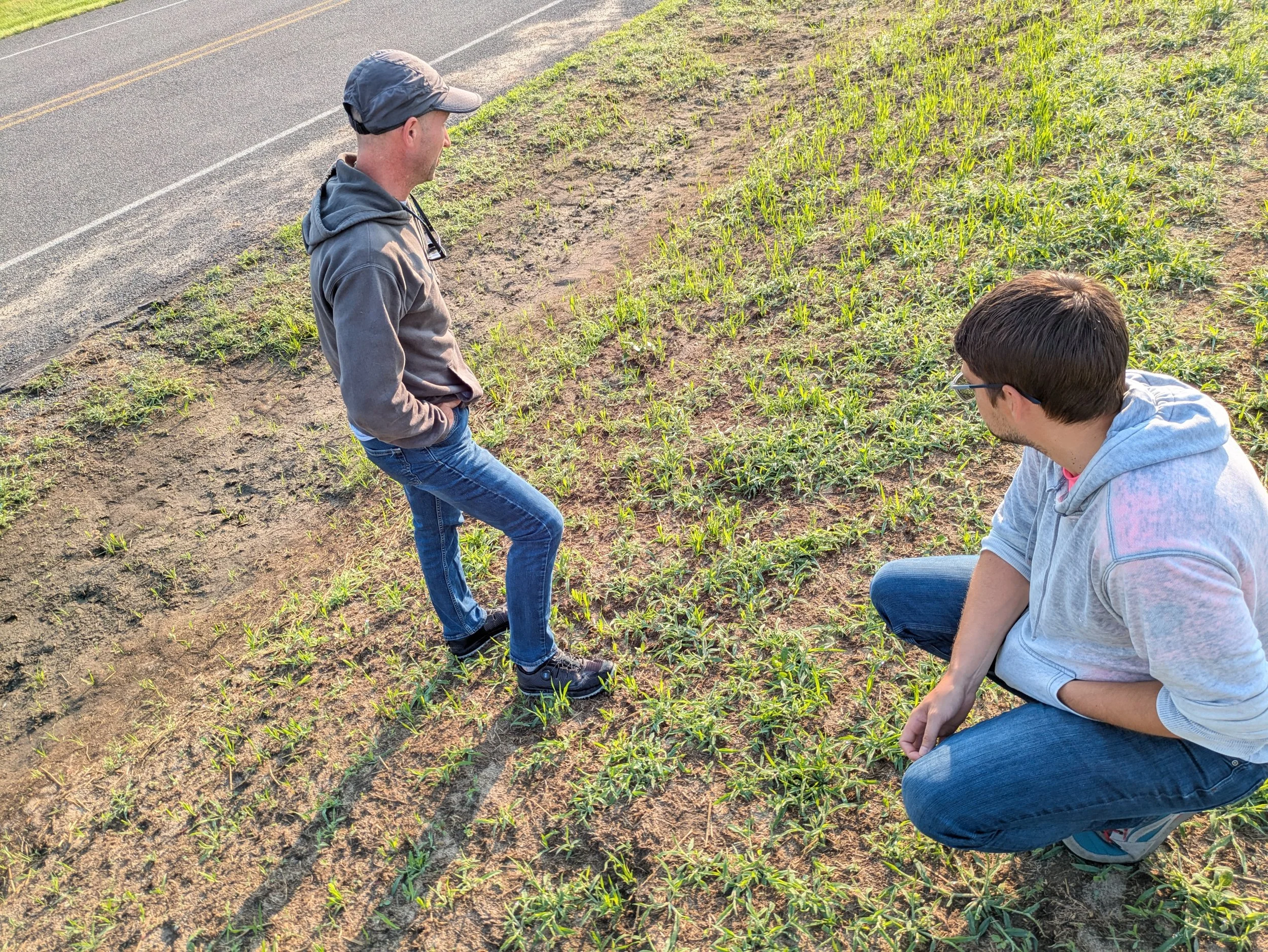Native Plant Gardens
The gardens featured below are here in your community. You can visit them anytime. Watch our events page to learn about upcoming garden projects that you can help support.
New Native Gardens!
〰️
New Native Gardens! 〰️
Demo Meadow & Native box Gardens
at Eaton County Government Complex
In summer 2025, in partnership with the Eaton County Facilities Management, technical support from NRCS, and funding from the Wildflower Association of Michigan (WAM), ECD volunteers planted the two garden boxes that adorn the entrance signs of the government complex with native plants.
A demonstration meadow was also established on the 1/8 acre island of land in the parking lot at 551 Courthouse Drive. View the photos below to see the story of it’s creation and how you can do the same project on your property!
Pictured Left: Volunteers cleared debris, prepared the garden boxes, and planted a variety of native plants that are well-suited to the dry, sunny conditions of the site. Consideration was given to the height of the plants so as to not block the view of the signs.
Some of the plants included are: Wild Petunia, Bristle Leaf Sedge, Nodding Onion, Hairy Beards Tongue, Silky Aster, Button Blazing Star, Butterfly Weed, Wild Bergamot, June Grass, Horsemint, Grey Goldenrod, and more…
If you would like more information to plant a native garden box on your property, reach out to our office!
Demo Meadow
If you want to turn a large area of turf grass into a pollinator supporting native prairie, watch the progression of this demonstration meadow.
You can start your project as early as the grass turns green. For this project, Eaton County Facilities Management started in May. They treated the turf with glyphosate, waited two weeks and applied again. This process can be repeated 2-3 times, until no green plants are growing in the area. Then, rough up the soil with a rake so that the seed can make contact with soil or use a no-till drill. Thanks to support from the Wildflower Association of Michigan, Michigan native genotype seed was mixed with oat seed and spread. The oat seed competes with other weeds while the native seed is establishing its roots. The oat plants will be killed in the winter. Within 2 weeks, the seed was beginning to sprout. By August, the first blooms were showing themselves. By the end of September, the area was blooming fully and the plants were about 18”-2’ tall.
If you would like more information to create a pollinator-friendly prairie on your property, reach out to our office!
Conservation Education Garden
In partnership with Eaton County Resource Recovery and Charlotte Area Recycling Authority, and with the help of the 2022 Wildflower Association of Michigan Grant, Eaton Conservation District supported the effort to plant a new native flower garden at the Charlotte Area Recycling Center.
Boy Scout Troop #45 and other community volunteers worked to bring this garden project to life; planting plants, spreading mulch, watering, and more, all while learning about the importance of native plants and their role in overall sustainability.
This garden brings a positive contribution to the area’s local ecosystem and natural landscape esthetic and also serves as a long-term continued demonstrational host and resource for local conservation focused educational programs. It will be used to host various conservation related education projects. Thanks to Hammond Farms Landscape Supply for providing 10 years of mulch.
AL!VE PRESERVE Planting
The Eaton Conservation District partnered with AL!VE, the US Fish and Wildlife Service, Eaton County
Pheasants Forever, and the Doty Wildflower Association to complete a prairie grass and wildflower planting at AL!VE on Lawrence Ave in Charlotte.
The preserve project was planted in summer 2012 and consisted of 4 species of warm season grasses and over 30 native wildflowers. The site includes walking trails through the habitat and interpretive signage.
The front section of the property was planted to a raingarden. A rain garden is a planted depression that allows rainwater runoff from impervious urban areas like roofs, driveways, walkways, parking lots, and compacted lawn areas the opportunity to be absorbed. This reduces rain runoff by allowing storm water to soak into the ground. The purpose of a rain garden is to improve water quality in nearby bodies of water. Rain gardens can cut down on the amount of pollution reaching creeks and streams by up to 30%.
This site is a GREEN addition to our community and provides habitat, ecosystem services, and a great opportunity for the public to learn more about natural areas.
General Motors Lansing Delta Township - Habitat Garden
Students from Greater Lansing Adventist School planted a large pollinator garden at the site of the GM LDT Habitat Area. This garden featured over 500 native plants. Native plants serve to attract many species of song birds, beneficial insects, butterflies and mammals. Native Michigan wildlife has evolved along side the plants depending on them for food and shelter. By planting natives, we can increase biodiversity, or the number of species of plants and animals living in a particular area.
Charlotte Raingarden
Fifty three volunteers lent a hand to protect water quality in the Charlotte area. The volunteers worked with the Eaton Conservation District (ECD) and the City of Charlotte to install a raingarden and riprap ditch near the site of the City of Charlotte's Waste Water Treatment Plant.
The Eaton Conservation District received a $1,000 grant from the Doty Foundation towards materials for the raingarden implementation. ECD worked with the City of Charlotte to select the site. Volunteers were recruited from Olivet College, the Greater Lansing Adventist School, and from the Charlotte community. Over the two days of construction, the volunteers transported rocks, soil, mulch, and planted over 500 native plant plugs at the site.
The raingarden project is one of many water quality projects that the ECD has partnered with the City of Charlotte on. Other cooperative efforts include the Charlotte Wellhead Protection Team, the Battle Creek River dam removal and river restoration, and the Annual River Conservation Day.
The raingarden and riprap ditch were installed to handle stormwater run-off from roads and lawn. Stormwater is water that accumulates on land as a result of storms, and can include runoff from urban areas such as roads and roofs. Over the years the rainwater had eroded a ditch 2 feet deep and 30 feet long through the woods. The soil from the site was washed into the nearby Battle Creek River.
Sediment entering a river can cause turbidity in the water that limits light penetration and prohibits healthy plant growth on the river bed. Sediment also covers much of the river bed with a blanket of silt that smothers life. By covering up gravel and cobble, sediment destroys the spawning grounds and habitat of desirable fish species. Also, sediment is an important carrier of a critical pollutant: phosphorus. This nutrient stimulates excessive algae growth in the water. When the algae decomposes, it depletes dissolved oxygen from the water, reducing the quality of life forms that are able to survive.
To fix the erosion problems, a raingarden and riprap ditch were installed. A raingarden is a depression planted with deep-rooted native plants & grasses. Raingardens slow down the rush of water from hard surfaces, holds the water for a short period of time and allows it to naturally infiltrate into the ground. Over 20 species of native plants were planted at the site and were selected to have continuous blooming throughout the summer. To create the riprap ditch, volunteers lines the eroded area with geotextile fabric and lined the ditch with rocks.
In the future, the ECD plans on developing an educational display and recruiting volunteers for weeding and maintenance. To find out more about upcoming volunteer or water quality improvement projects, contact the Eaton Conservation District at (517) 543-1512 X 5.
